Through the many years that I played on and around bridges – yes, played, my father was a bridgekeeper in Inverness – studied about, worked on, taught about, and simply admired bridges, the one feature I most admire is the arch. (If you share my interest in arches, please refer to the series of six articles I contributed to Postcard history in 2020 and 2021.)
The arch is a vertical curved structure that bridges space. It can take many forms and can span – solitarily or in series – nearly any distance if the distance conforms to a height ratio. Arches can be natural or manufactured using stone, concrete, steel (iron), wood or other materials that possess dynamic strength. The practical use of the arch was discovered by the Egyptians in the 4th millennium BC, but it languished in history until the Romans adopted it for their public structures around 400 to 300 BC.
Most arches require a keystone. It is a wedge set into the apex of an arch. It is typically the last piece to be set during construction because it is the functionary piece that makes an arch secure and stable. Some of the world’s most intriguing art appears on arch keystones in the form of a signature, an emblem, or symbol.
The arch is essential in most kinds of architecture, particularly in public works because of its innate aesthetic.
A bridge is likely the best example – an opinion – of the proper use for an arch in architecture. Without the arch, bridges would be dams. What follows are my thoughts (and a few facts) on three of my favorite bridges in Scotland, one in Ireland, and two in England, which are first the most beautiful and second, the most recognized bridge in Europe.
***
The Healey Dell or Broadley Viaduct is a magnificent stone, single track railway bridge that spans the Healey Dell Nature Reserve in Rochdale, near Manchester in England. It was built in 1867 and is a remarkable example of Victorian engineering and architecture that carries the railway line across the River Spodden.
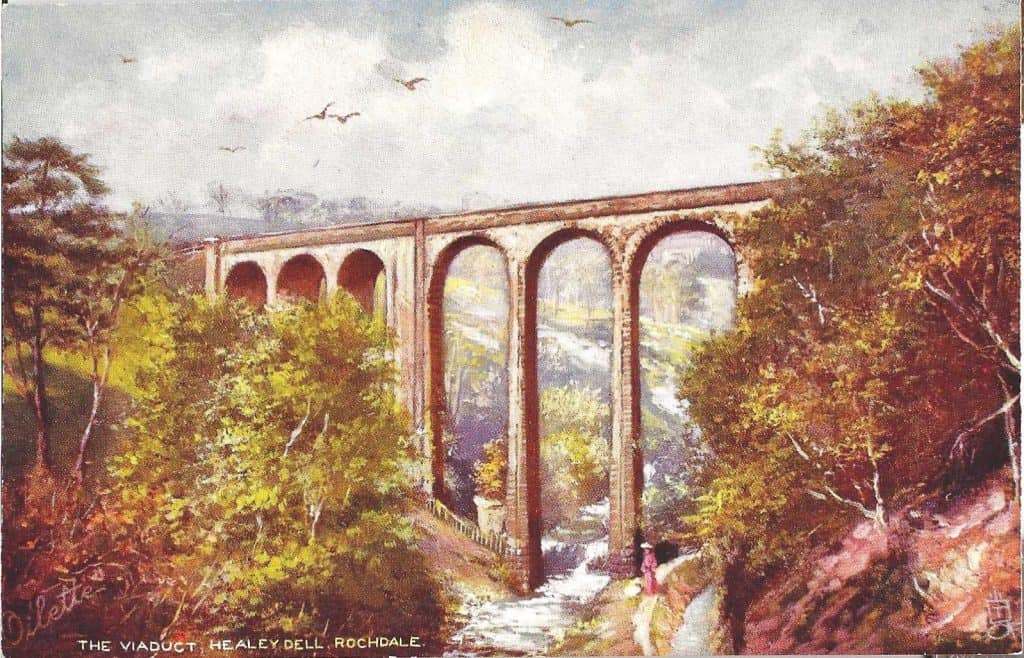
The bridge consists of eight arches, each measuring 30 feet wide, At the deepest part of the valley the structure stands 105 feet above the water level.
Originally constructed for the Lancashire and Yorkshire Railway Company to carry their freight and coal trains, it played a valuable role in the transport of materials used in the area’s industrial development. It operated until 1949, but still carried coal trains until the mid-1960s.
Today, it has become a popular tourist attraction because it has been repurposed as a bicycle and walking path and is part of the National Cycle Network. The nature reserve surrounding the bridge is renowned for its plant and wildlife species, including rare orchids, kingfishers, and herons.
The Gap of Dunloe is a slim pass in the mountains of southwest (County Kerry) Ireland. It separates two minor mountain ranges – the Purple Mountains on the east and the MacGillycuddy Reeks on the west.
The name “Dunloe” is believed to be the English translation of “Dún Lóich,” meaning, a fort near the River Loe. The River Loe runs through the gap and forms a series of cold water lakes, the last of which is the Augher Lake. (Seen in the postcards above.)
From the account of a true old-timer, “. . . the old arch bridge has always been there. Ne’ery a soul knows when it was built. Also, no one knows why, but it has always been known as the “Wishing Bridge” ‘cause the fairies once promised that wishes made while crossing the bridge will come true.”
Today the river, lakes, and land, like most of County Kerry, is there for hikers, nature lovers, and mountain climbing enthusiasts.
Stirling Bridge
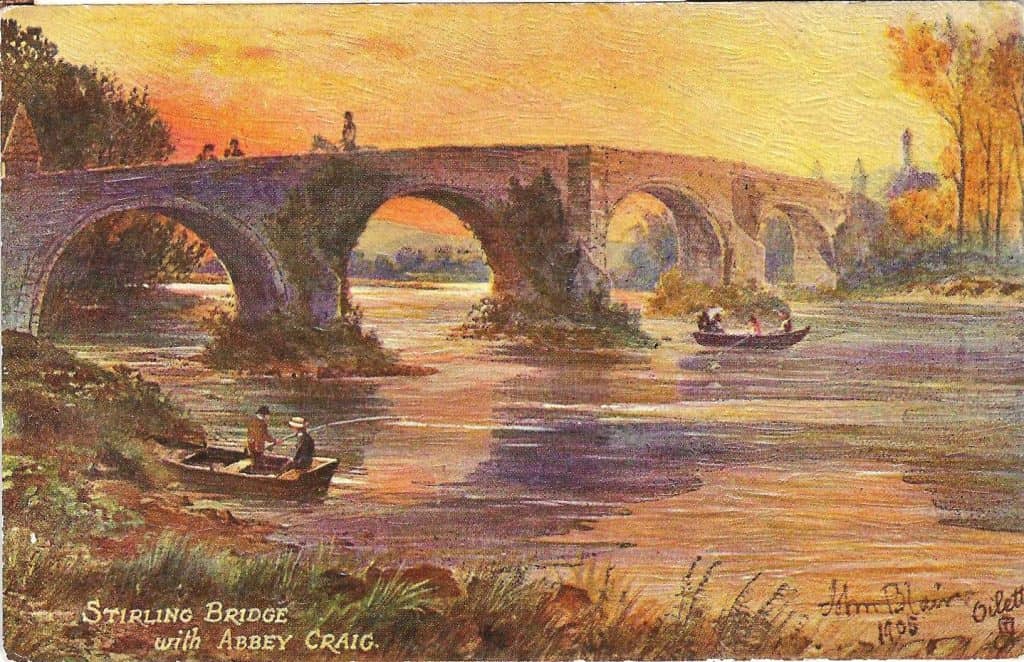
The Old Stirling Bridge is exactly that – it’s old! Built to replace a succession of timber bridges, it was for centuries one of the most important river-crossing points in all of Scotland.
It is undoubtedly the best-known of the Forth River bridges because it was the one that stood nearby, when Sir William Wallace and Sir Andrew Moray defeated Edward I’s forces at the Battle of Stirling Bridge in 1297. The result being a significant victory for the Scots in their fight for independence.
History repeated itself in 1745. The bridge also played a role in the Jacobite Rising, when an arch was removed to forestall Bonnie Prince Charlie’s forces as they marched south. The bridge today remains one of the best medieval masonry arch bridges in Scotland.
The Forth River Bridge in Scotland
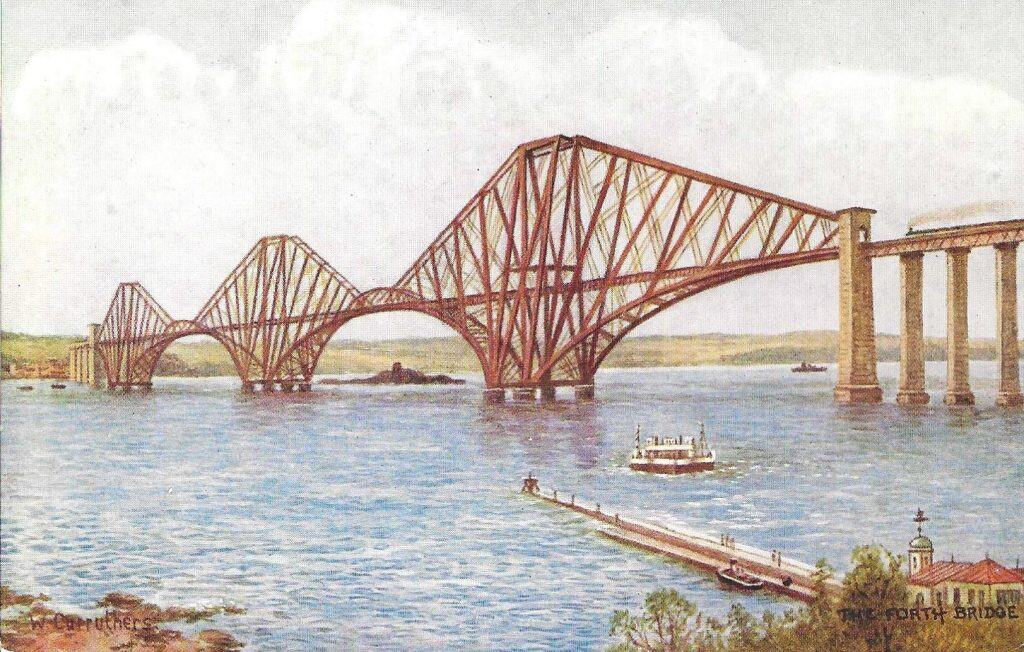
The Forth Bridge is a railroad bridge about nine miles east of Edinburgh. Many think it is an impolite disservice to the public that only rail traffic uses the bridge. This bridge is admired by architects from around the world. Its design is unique and in the opinion of many is that it enhances, rather than detracts from the landscape.
It is a cantilever railway bridge that was completed in 1890 and was once voted to be Scotland’s greatest man-made wonder. It is also a UNESCO World Heritage Site.
The English engineers, Sir John Fowler and Sir Benjamin Baker, designed the wrought iron bridge and oversaw the initial construction that began in 1882. It was opened in 1890 by the Duke of Rothesay, the future Edward VII. It is 8,094 feet long (a few feet over 1.5 miles. When it opened it had the longest single cantilever bridge span in the world.
This bridge was the first major structure in the world to be made from steel, and its distinctive red color has become an iconic symbol of Scotland. (And like the Golden Gate Bridge in San Francisco, America, whose paint color has been appropriately named International Orange, the color of the Forth Bridge is Forth Bridge Red – a paint especially formulated to imitate the original oxidation of its wrought iron.)
The Forth Bridge is still in use today and is likely the most photographed bridge in Scotland.
Glasgow Bridge
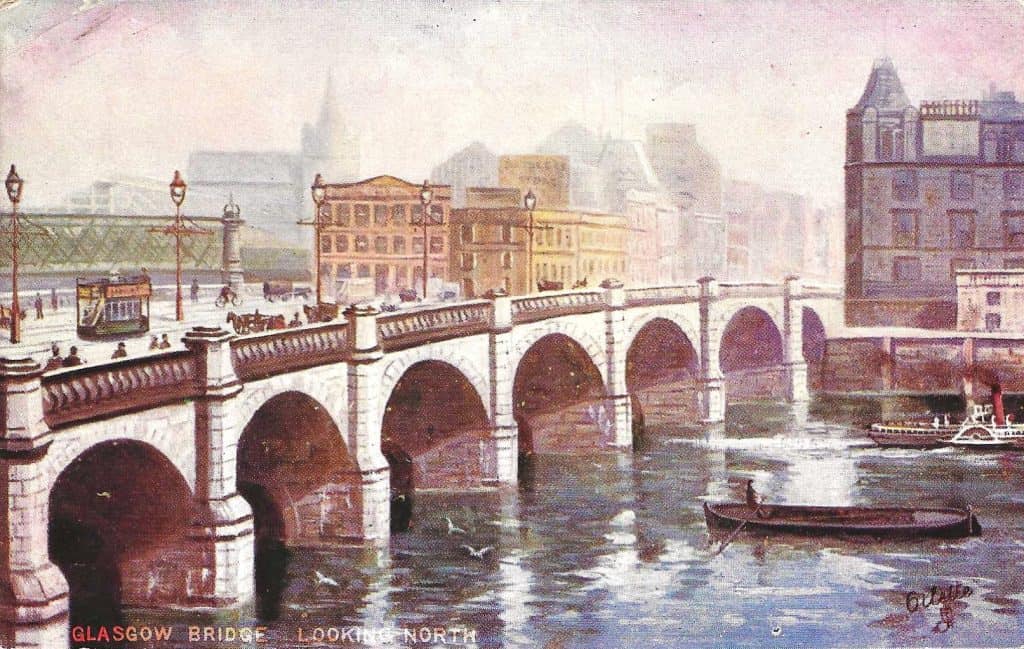
The first bridge to cross the River Clyde in Glasgow, Scotland, was a wood structure built in 1651 and was known as the Broomielaw Bridge. It lasted 126 years. The second bridge was a seven-arch structure that was considerably more substantial and was completed in 1777. That second bridge was the first bridge in Glasgow to be lighted using electric, lasted 118 years. In 1895 the stone bridge was redesigned and rebuilt, this time using steel. In 2009, the 1895 bridge was 124 years old. It was time for a new one, but the plan to build bridge four was abandoned. More on that later.
During World War II, the Glasgow Bridge became a strategic route for military vehicles and supplies. It also served as a key evacuation route for civilians during air raids. As a factor in local lore the Glaswegians had great faith in the durability of their bridge. Stories and newspaper accounts tell how dozens, perhaps hundreds of families taught their children that if they were ever separated because of the war, that they should meet at the bridge.
Today, the Glasgow Bridge continues to stand as a symbol of the city’s resilience.
The 2009 plan for a new bridge was realized but it is far from being a traditional river crossing – it is a footbridge that connects the Anderson neighborhood on the north bank to Tradestown on the south.

The Westminster Bridge
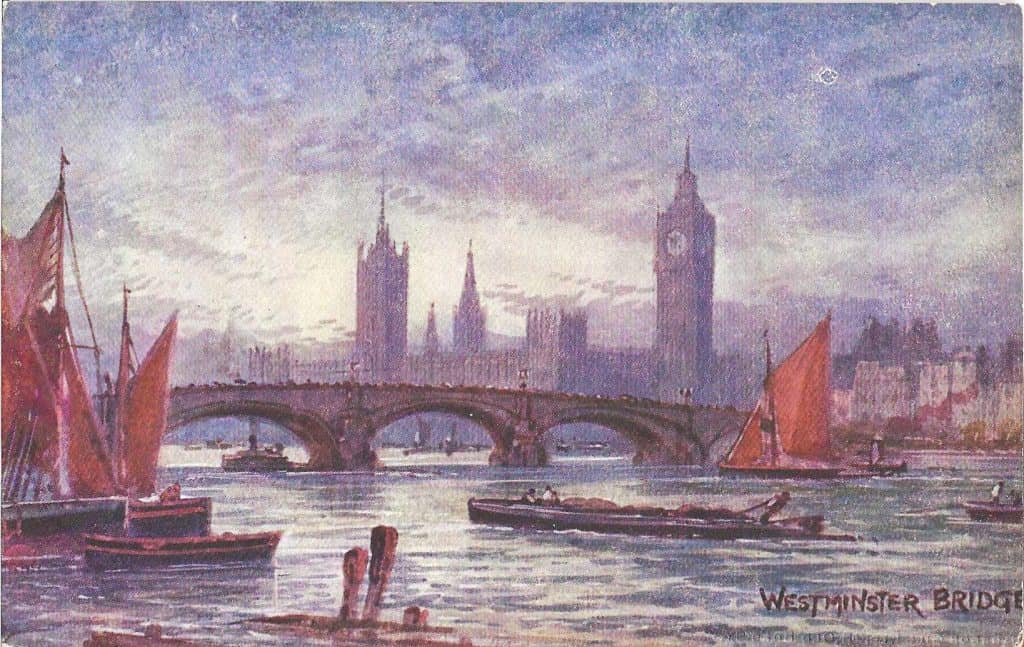
This bridge is a destination for every first time London visitor or tourist. To stand on the sidewalk of this bridge where the world around you assails every human sense, is a thrill beyond belief. (When I was teaching, a two-day trip to London was a volunteer option in the curriculum that in my fourteen years in that department was missed by only three students.)
Standing on that bridge is a real “S – T – S – T – S” experience.
The Sights are so numerous, you are bewildered. From the Houses of Parliament and Big Ben, or from Westminster Abbey in the distance to the serene doorsteps of the Church of St Margaret, you don’t know where to look first.
The Touch of the physical elements is overly sensitive. Your hands reach for the rails, your feet want to run. Feel the zephyrs of air generated by passing traffic on your face.
Smell the odors of the river and the aromas wafting from the flower stalls.
Taste the falafel from the food trucks on the banks.
And pay attention to the Sounds. The traffic noise is invigorating and so are the voices of those on the street but wait for it – on the hour you will hear the chimes of Big Ben.
Westminster Bridge is one of the oldest bridges in London, spanning the River Thames in the heart of the city. The first iteration of the bridge was constructed between 1739 and 1750. Charles Labelye, a Swiss engineer was the designer, but his work was “shoddy” and done on the cheap. The structural issues were so severe that “Charles’s Calamity” was replaced in 1862 by an all new bridge designed by Thomas Page.
The bridge has played a substantial role in the history of London. The bridge has witnessed protests, celebrations, and royal processions too numerable to list. One popular event associated with the bridge is the annual boat race between Oxford and Cambridge universities – it is the only event that goes under the bridge, not over it. Today, Westminster Bridge is a destination where the city meets its river. A place where the streets of the city blend with the water in the Thames.
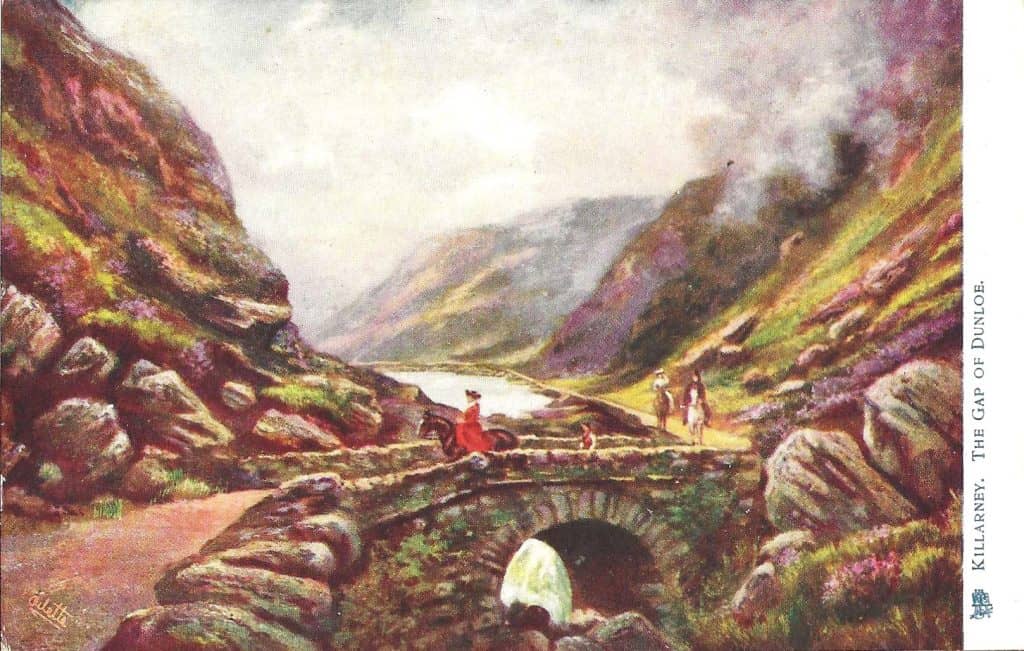

As a Fifer who has worked in both Glasgow and London, I know a number of your featured bridges well. I am not sure which bridge is my personal favourite although I will admit to having spent many hours over the years photographing the Forth Bridge. The appeal of the Glasgow bridges disappears rapidly when one takes part in the annual (6 mile) Bridges charity Walk. I enjoyed your article
You would like the Sydney Harbour Bridge I expect
Thank you
Very interesting and informative article.
What an interesting article! Bridges lend themselves to collections that could go in any direction; by geographical location, of course, or by type of bridge construction, very old bridges that are still in place but no longer in use or bridges that have passed into history. I wonder how many bridges are on the National Register of Historic Places? So many bridges have collapsed that those might be a collection.
What beautiful cards Dr. D. and you have a beautiful name and no doubt a beautiful life too. I’m triply jnterested in your article since my dad was born in in London. On my maternal side Grandma Lang had ancestors who came to start a town on What became Ryegate VT. I wish I could have kept up with relatives there and visited across the water. PCs are the next best way.
Fascinating article – just a comment that the new Glasgow Bridge’s name is Tradeston Bridge (not Tradestown) and is referred to by locals as the “squiggly bridge”. I know this because my daughter lives just up the road shown ahead on the card – West Street.